I caught my first glimpse of the Kogi tribe from the window of a local bus.
We were trundling down Colombia’s main coastal highway, fresh from Parque Tayrona and on our way to Palomino, when I saw them: two boys dressed head to toe in white, standing solemnly, their bare feet curling in the dirt. Brothers perhaps; definitely together, members of the same community.
The bus moved on quickly and they were gone again – but their image stuck in my memory for the rest of the journey.
Once we’d reached The Dreamer hostel where we were staying, mere steps from the beach, I found out where the boys came from. One of the posters at the entrance, next to the desk where a friendly Colombian checked us into our dorm room, was a poster.
“Visit the indigenous Kogi tribe of Palomino, Colombia!”
The slogan jostled for space amongst a montage of photos featuring empty swathes of sand, palm trees, and the ruins of the Lost City. The Dreamer hostel where we were staying organised day long outings to visit a local Kogi community – a group of nomads descended from the Tairona people who had successfully managed to preserve their traditions and culture, remaining outside of the modern Colombia.
The idea of taking a tour to meet these people at once fascinated and repulsed me. On the one hand I was really interested in the Kogi and wanted to learn more about them, but I also didn’t want to be a vulgar spectator, staring at a tribe of people like animals in a zoo.
So despite spending the next four nights on the edge of the Caribbean sea at Palomino beach, I abstained from visiting the Kogi.
What I didn’t know was that, in a rather roundabout way, they’d be visiting me.
Seeing the Kogi people – without meaning to
The next time I saw a member of the Kogi, we were wandering up the dirt track from our hostel that led to the main highway. Palomino is a tiny place, marked briefly on the major coastal highway by a stretch of shops and restaurants that take less than ten minutes to walk from end to end.
Off the highway, a few dirt roads lead down to the beach, where the proliferation of hostels and guesthouses exist. Except for these, there would barely be any kind of tourist influx in Palomino.
Read more: Everything I’ve Learnt about Backpacking Colombia
As we stopped at a small tienda to buy a big bottle of water from a teenage girl who looked bored out of her skull, I noticed a man ahead of us, walking slowly through the pink blossom littering the path. He was supported by a younger woman, holding the crook of his arm. They were both wearing white.
We walked past them as she guided him to a red plastic chair outside a small fish shop/pescaderia. I didn’t want to look too long, but my eyes took in details hungrily; the long dark hair they both wore loose, the woven bags slung around their chests, his milky blind eyes, her expression of care.
That lunchtime, as we ate fish soup and drank agua de panela at a Spanish guy’s restaurant, I thought more about those white clad figures, and wondered whether I’d missed out on an opportunity by not visiting the local community.
But I thought back to other ‘meet the locals’ situations I’ve encountered in the past – like visiting members of the Karen Long Necked tribe in northern Thailand, where I felt so ashamed of myself for pandering to such voyeurism – and I was happy with my decision.
Another run in with the Kogi people
That evening we walked up to the highway again for a evening snack of arepas con queso at a street stall, when we passed a group of women and children in their white tunics, looking solemn, silent, and a little confused amongst the modern trappings of the coastal Colombians.
A car with a Bogota numberplate pulled up to the side of the road and a man in a crisp grey suit clambered out to grab some food alongside us.
When I looked back, the women and their progeny had melted away.
We spent the rest of the evening spent throwing heavy metal pucks at boxes of sticky grey clay, with two small paper packets of gunpowder propped up against a metal ring in the centre of each box. Playing tejo is a common pastime in Colombia, particularly on the coast – but when it’s set up in a man’s back garden, amongst clucking chickens, tiny kittens, and dogs who seem completely unperturbed by the sound of explosions…
Life is slow in Palomino, Colombia
Apart from playing with gunpowder, our days in Palomino passed lazily enough.
I lived mostly in my bikini and didn’t stray far from either the sea’s turbulent edges or the calm waters of the hostel swimming pool. Occasionally I checked on a cardboard box in the outdoor kitchen cupboard filled with week-old kittens that the hostel staff were keeping safe.
We walked up to the highway at least once a day, shuffling our feet through the pink blossom littering parts of the path, and picking up the fresh little sugar mangos which had fallen from the surrounding trees.
We waved hello to the same sleepy dog that remained unmoving in one specific shadow every time we saw him, and silently rejoiced whenever the driver of a particularly beat-up old truck drove past us with his thumb up.
At night, we drank beers, played multiple games of cards, improved on our pool playing techniques and spent one evening on a three hour marathon game of Monopoly, where I realised how brutal a game it can be.
I’d almost forgotten about my fleeting moments with the Kogi tribe of Colombia until the morning of our last full day in Palomino dawned, when Josh and I went for a walk along the quiet beach.
Meeting the children of the Kogi tribe
We strolled through the surf, climbed up the sand banks, marvelled at how empty the beach in front of us was. And then we came across a group of children, eight or nine of them, some sitting in the sand, others floating around in the sea aided by pieces of driftwood and screaming with joy.
There were no adults to be seen; no obvious place they would have come from. Except for the mass of jungle that lay a few metres from the water’s edge.
There were two tiny boys squatting amongst the washed up sea debris, each holding one handle of a blue striped plastic bag filled with shells. They were searching through the debris and picking up various shells; I started doing the same, before giving one of them my handful.
There was no response; just an unblinking gaze for a few seconds, before his eyes snapped back to the bag of shells again.
I found out later that they crush the shells and mix them with coca leaves. I also learnt that the Kogi tribe are apparently not interested in tourists at all.
Lessons learned from not meeting the Kogi people
From time to time, you find yourself in places that feel more special than others. Maybe it’s when the tourism hasn’t become too pronounced yet, so there’s an element of “not that many people come here – but I did!” going on.
Other times, it’s when something in that place sparks your imagination in a way you weren’t expecting. I don’t have any pictures of the few Kogi people that I encountered, but its strange how much of an impact those few sightings made on me. A group of children on the shore, looking at me solemnly while picking up shells, climbing on aged wooden trunks, paddling furiously in the surf on pieces of driftwood. A blind man being led by a young woman to sit down in a red plastic chair outside a small fish shop. A group of women and children standing in stark contrast with present-day Colombians.
And then there are the moments when you realise something about the way you travel. When you notice that a small place like Palomino makes an impact on you that the stunning landscapes of Tayrona failed to do, simply because you travel more for people than for nature.
Book Your Palomino Hostel Here!
Do you want to read more about my Colombia adventures? Head to my Colombia archives or check out these articles:
A travel guide to backpacking Colombia
Is Parque Tayrona worth the price for paradise?
Why Don Elias runs the best coffee farm tour in Salento
Celebrating Easter in the mountains of Jardin
The magical world of Guatape
Sleeping in a giant hammock in Minca

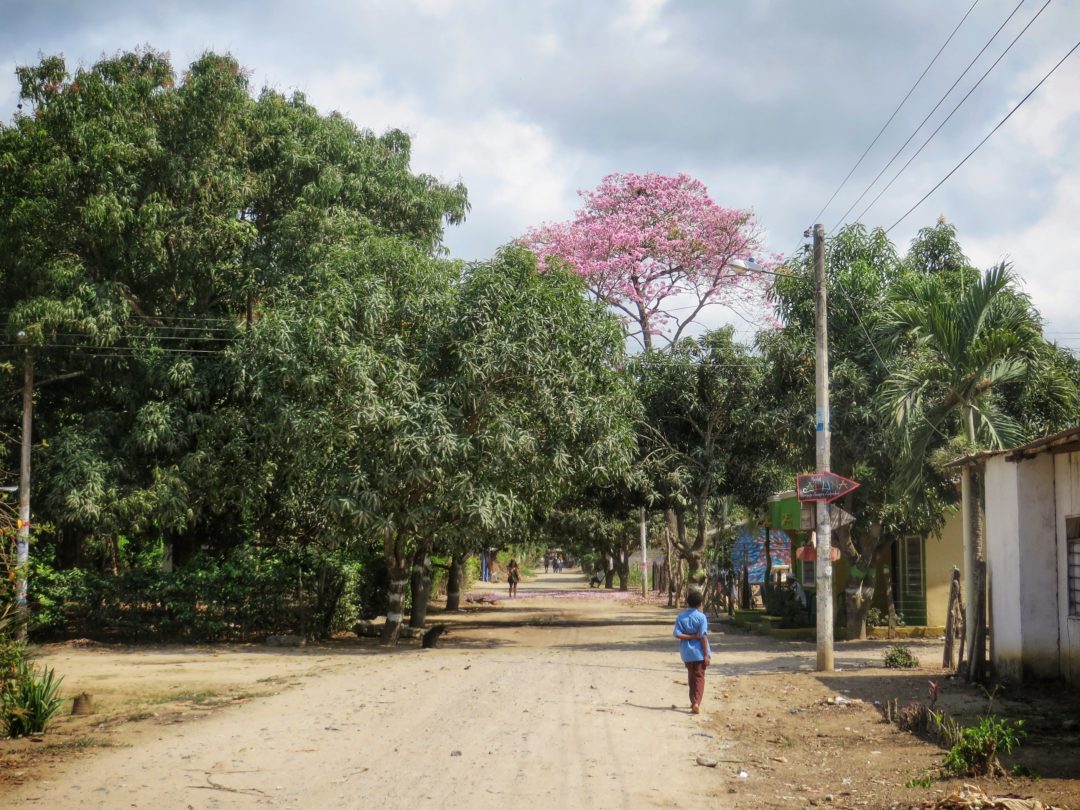
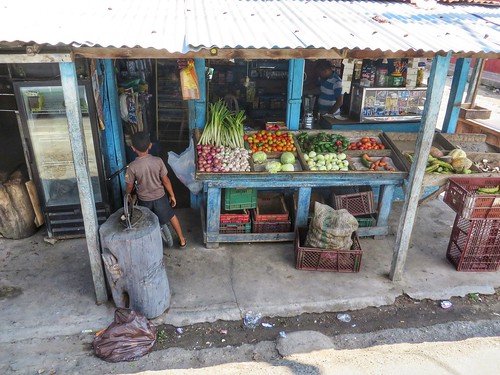
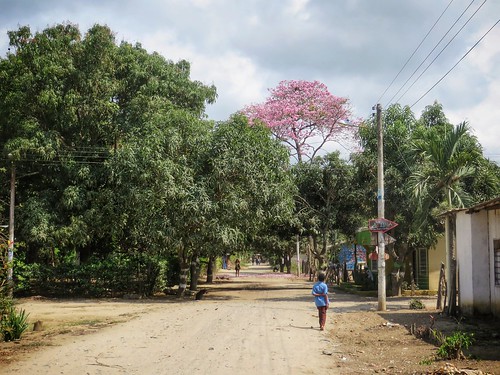

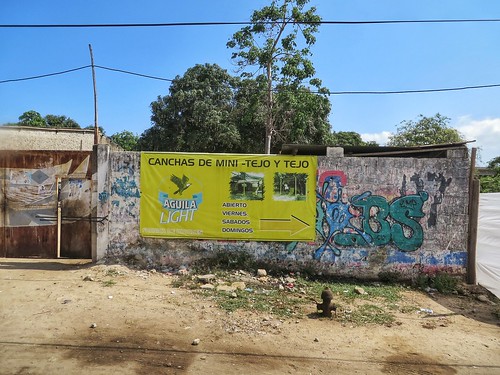
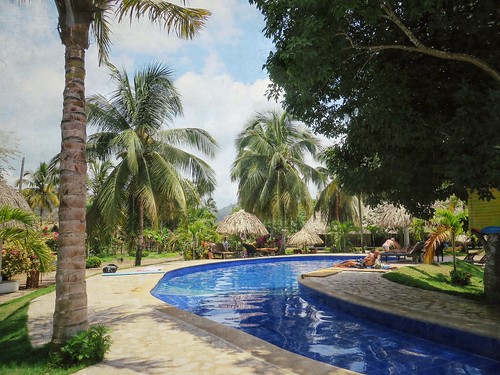

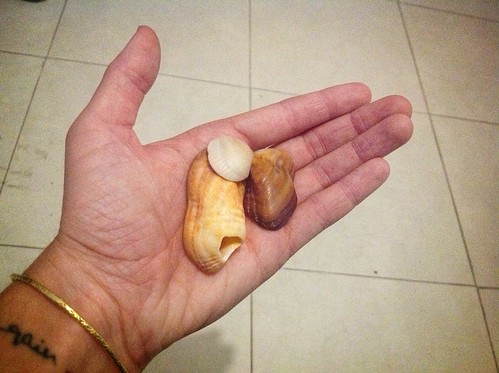
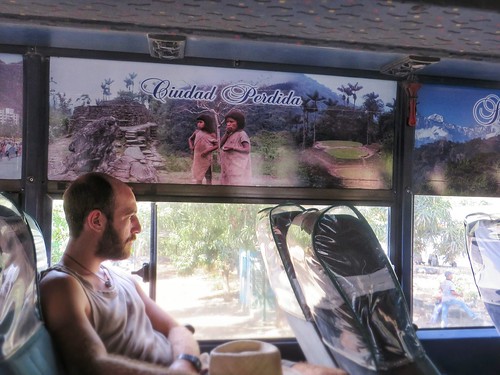
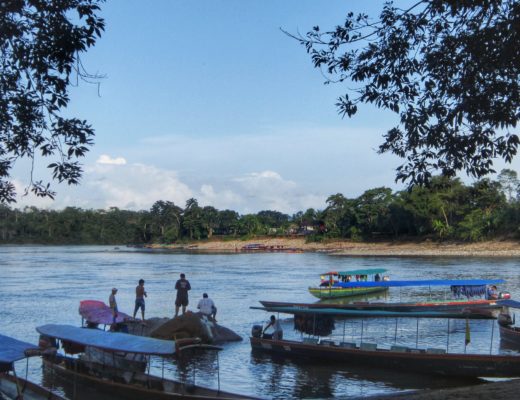
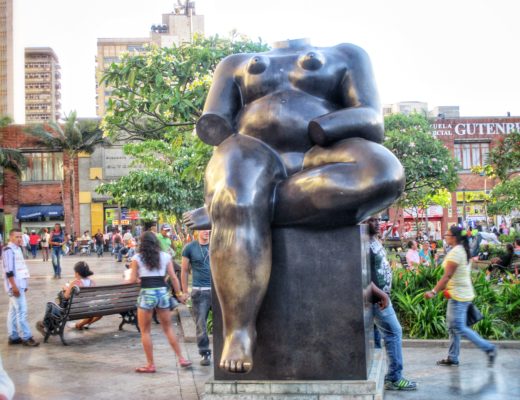
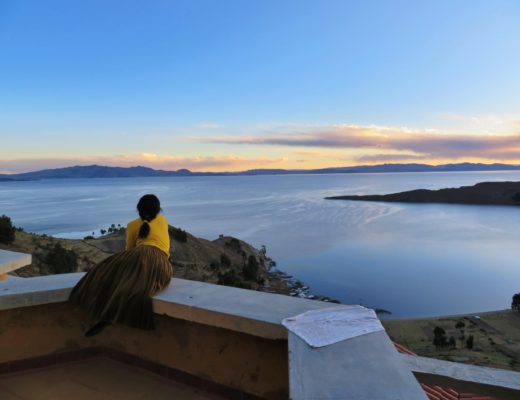
13 Comments
Lauren
June 26, 2014 at 1:35 amWhat a beautiful story, beautifully written….I wouldn’t want to go on a tour to gawk at people who live in tribes, it would make me feel like I was going to some sort of human zoo or something. I’m glad that you had some quiet interactions with a fascinating group of people, and I’m glad that you wrote about it so I can learn something of them, too!
Flora
July 11, 2014 at 1:27 amThanks Lauren 🙂 I’m glad I met them in some capacity, at least – and that I stuck to my guns and didn’t head out on a tour!
Zoe @ Tales from over the Horizon
June 26, 2014 at 7:17 amVery well written, I’m torn about visiting local tribes like this. I don’t want walk through a human zoo, but I would really like to see and interact with them. And who knows what they think? Maybe they would be happy for you to come so that then they would get more money? I don’t know, I haven’t made my mind up on the issue.
Flora
July 11, 2014 at 1:28 amYeah, it’s a difficult one. I think if I’d had more time I would’ve talked to the people running the tours and asked those kind of questions. I actually did learn later on that the woman who organised it was working with the Kogi as part of her PhD, so maybe it was a legit project after all.
Nikita
June 29, 2014 at 2:00 pmI’ve also refused to visit tribes in the past, for exactly those reasons. And I felt like maybe I was missing out, but I prefer that to being in that uncomfortable, “gawker” position. The encounters you experienced sound a lot more unique!
Flora
July 11, 2014 at 1:30 amWhen I’m that uncomfortable ‘what the hell am I doing here’ tourist, I basically hate myself – we have that in common, Nikita!
marcos kaseman
June 29, 2014 at 4:18 pmhola flora,
when i first read that you were writing this article i immediately thought, OH NO – SHE TOOK PHOTOS – as i continued to scroll down i continued with apprehension thinking please no photos and gladly saw – there were none.
i visited the lost city in 2009 before it has become overrun with tourism and the tranquility of the kogi and the waiwai peoples.
people, this is one of the last few real native peoples that REALLY want to be THEMSELVES. LET THEM BE – if you read about their lives – their respect for the planet and life – you might even want to become one of them. the 2nd post about wanting to give them money – they know how to survive with love, respect and care for their people and for nature. keep your pesos, and continue your travels with respect for them and all native tribes. i have been lucky to interact with them by invitation – WHY – i dont know but when i visited the lost city an elderly man and boy came to me and we spoke for a bit – i bowed out of reverence – he smiled and i left knowing i had met a special man and child. i also spent an entire day with a tribe on the amazon which still to this day was an eye awakening experience on what really matters in life – respect, kindness and a reverence for plants, animals and other species including man.
Flora
July 11, 2014 at 1:35 amWonderful story, Marcos! I completely agree with your viewpoint about the Kogi: although I really don’t know much about them, I got the distinct impression that they were very separate from the tourist world, which is amazing enough in itself in the modern day. Hopefully it stays that way.
Andreas Moser
July 2, 2014 at 7:25 amWhen I lived in London, I was also fed up with people coming to gawk and take photos.
Flora
July 11, 2014 at 1:38 amTourists were taking your photo in London?!
||||
May 10, 2018 at 9:30 pmThis post infuriates me beyond belief.
If we we don’t have something of value to offer or have shared with us, then indeed, let us gawk elsewhere.
But after a quick glance at your travel experience it perplexes me as to why you chose that mentality to latch onto throughout your trip, to not look further into the matter.
Then don’t gawk. Then communicate your sincerity in learning from the tribe. If you have that sincerity.
I will be living with the Kogi within a matter of weeks. Do you now what I did, besides thinking, “Geez I wonder what else I could with my life rather than stare at people?”
I told then I’m an American and the land is in trouble and I heard the Kogi know Mother. Yeah, a little research goes a long way. They were even more thrilled when they discovered I farmed on one of their most sacred sites of their’s in Ecuador. (It shall not be named.) and that I wipp be training with Nativr Ameircan shamans in aatribe they know very well, Lakota. I’ll be learning shamanic practices from the Kogi and general stewadry of land. This is what happens when we communicate from the heart.
So talk, say something. They are pleased to have someone learn their ways and share it with the world, so long as one wants to do that. It sounds like you couldn’t quite there this time, maybe it wasn’t your time just yet.
Aa for other people who evidently have never lived with a tribe: nobody is special or “unapproachable because my ancestors slaughtered them ages ago.” It is not up for us to decide other people’s emotions. It’s quite a rude thing to do, actually, as a general rule in life. Let them decide whether your gringo self is welcome or not. You could learn amazing things with them. If you’re sincere in your intentions to mend the f*ckery of your ancestors, into connecting deep into what they’re willing to offer, then it is your responsibility to ask. If you don’t ask, the answer will always be no.
Just don’t be a prick like Mead.
Flora
June 8, 2018 at 2:15 pmFirst off, I’m afraid I don’t know who Mead is – but I’ll endeavour to not ‘be a prick’ regardless!.
Secondly, your infuriation seems to stem from something much deeper than an article detailing the intrigue I felt about a local culture who I didn’t really interact with. In regards to your comment as to ‘why you didn’t look further into the matter’ – the way I choose to travel is simply that. My choice. The circumstances of my time in Palomino were such that I noticed the existence of the Kogi, and occasionally observed the distinct separation between them and the other Colombian locals, not to mention tourists. I didn’t ‘stare’ or ‘gawk’: I simply noticed their presence a few times during a week of being in their local landscape, and then chose to write about it.
It’s great that you’re planning to spend time with the Kogi people: you’re clearly in a place where that dedication makes sense for you. That doesn’t mean I’m obligated to do the same thing.
I’m more than happy to utilise the comment section as a form of discourse as I think it’s a great way to hear new opinions, but in future I’d really appreciate it if you weren’t so aggressive in your commenting. As you so rightly say, ‘it is not up for us to decide other people’s emotions. It’s quite a rude thing to do, actually, as a general rule in life.’
NicolaShebaily
January 10, 2021 at 5:57 amAs someone who has lived in many diverse cultures and countries I always find the western hang up about not wanting to seem like you’re participating in a human zoo to be quite strange. I have never found that to be a concern in other places. For instance, all through asia I have been photographed and mobbed constantly because I look different. For both the people doing that, and myself, it is not rude. It is simply showing natural fascination in something out of your norm. It is far better to be fascinated and curious than to not give a damn about the beautiful differences in our world, or even worse dislike them. All across africa, asia, the middle east, south america and so on people are absolutely overjoyed when others wish to learn about their culture, so long as this is done in a respectful way that the people themselves have a say in. In fact, many get extremely frustrated with western tourists purposefully avoiding them, and telling others to avoid them. Many rely on it to make a living, so are quite concerned about western tourists staying away. Others just want to share their culture. Still others want to interact and see tourists because they are different (again, natural curiosity). I really wonder why this is such a western hang up.